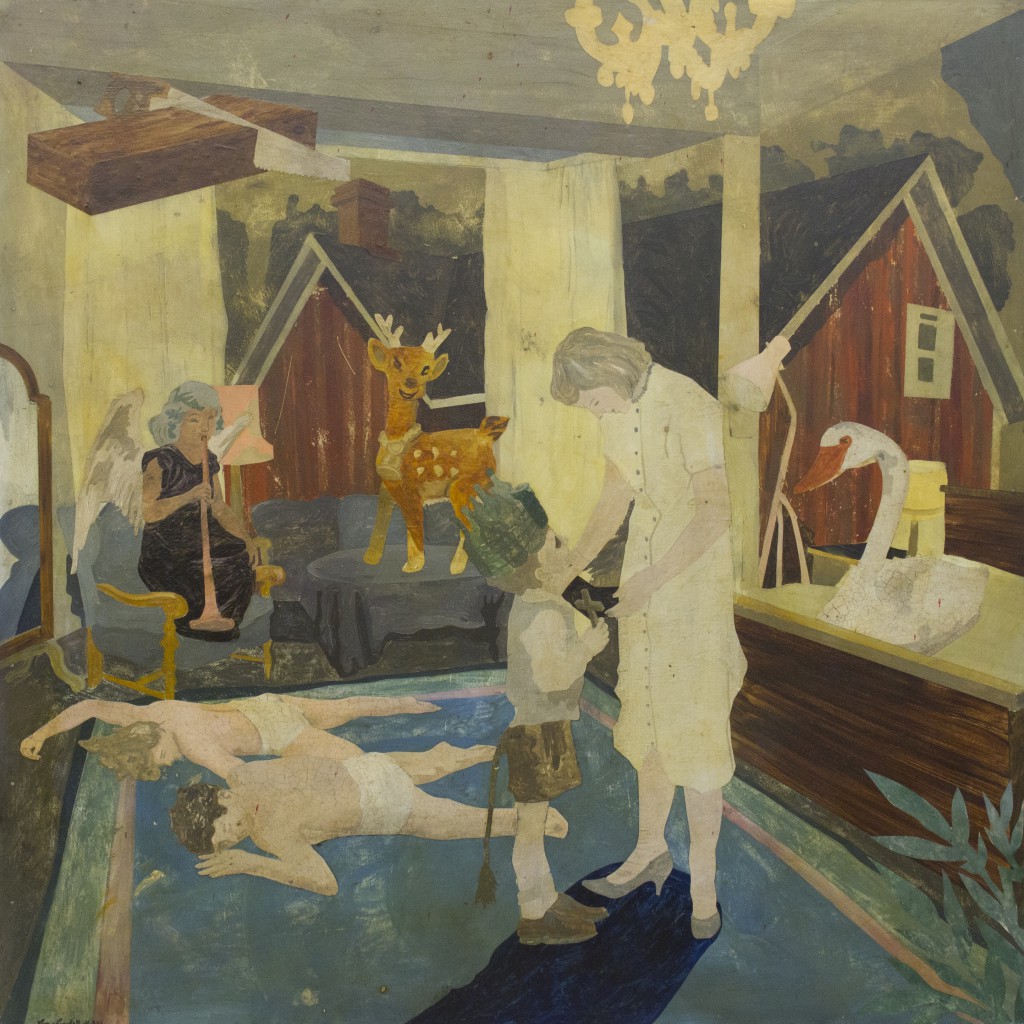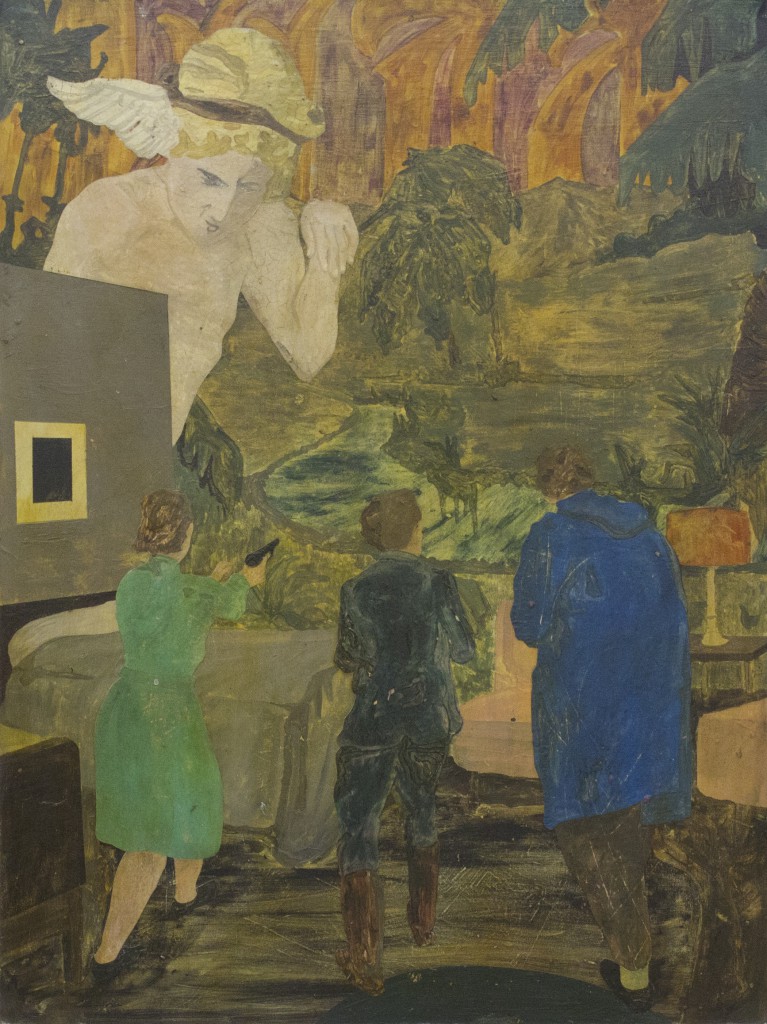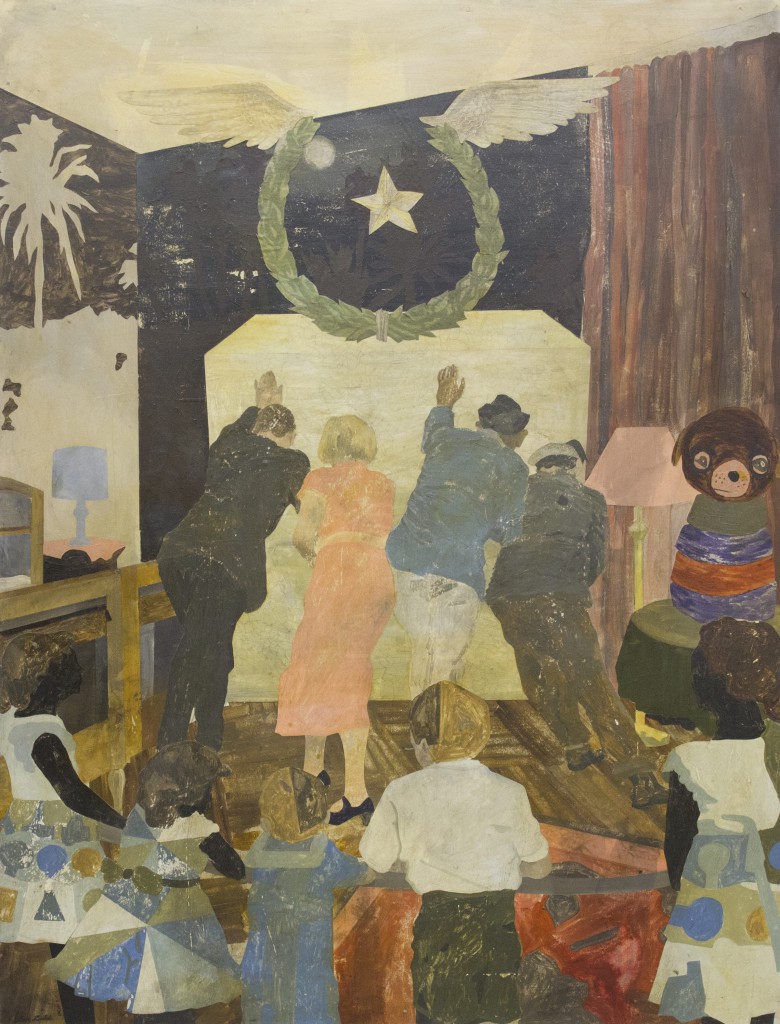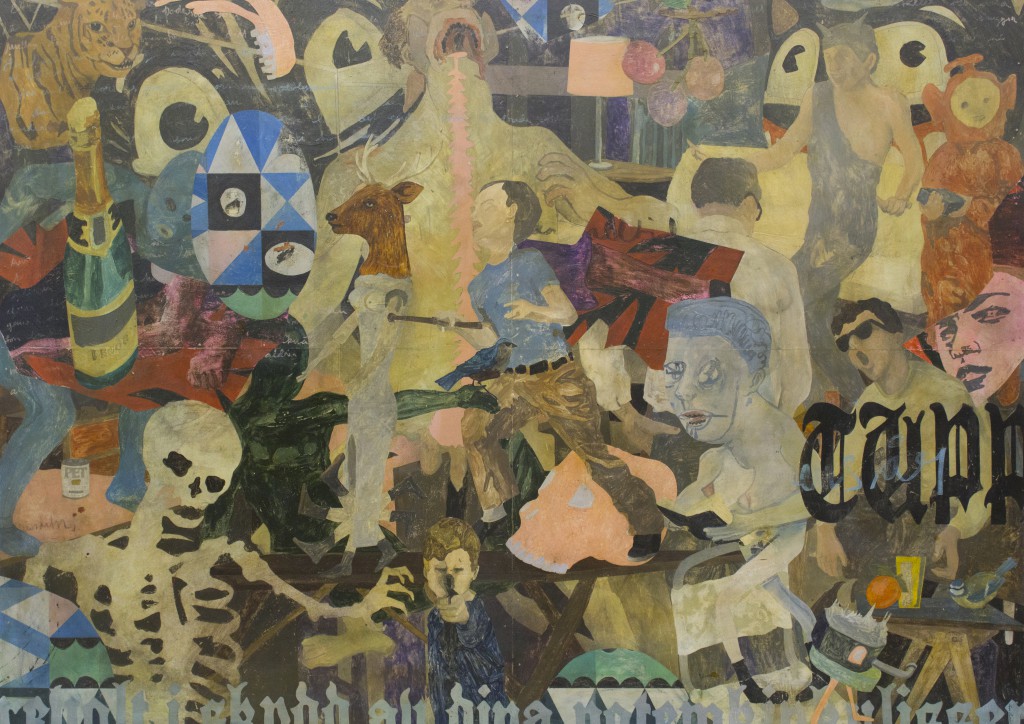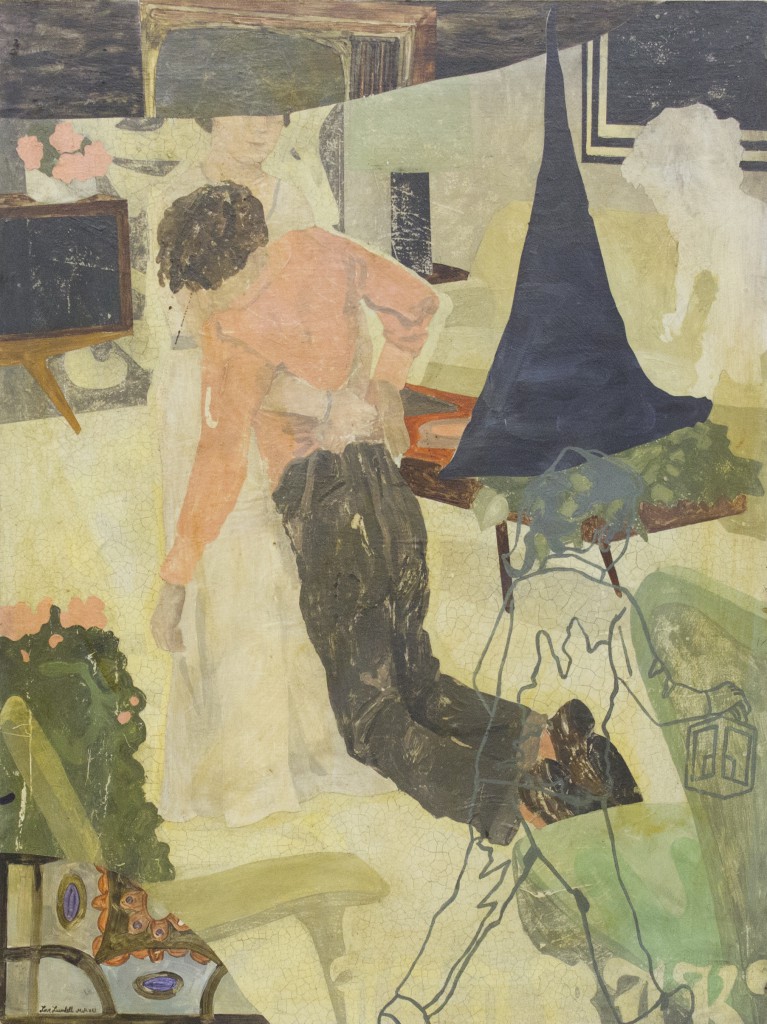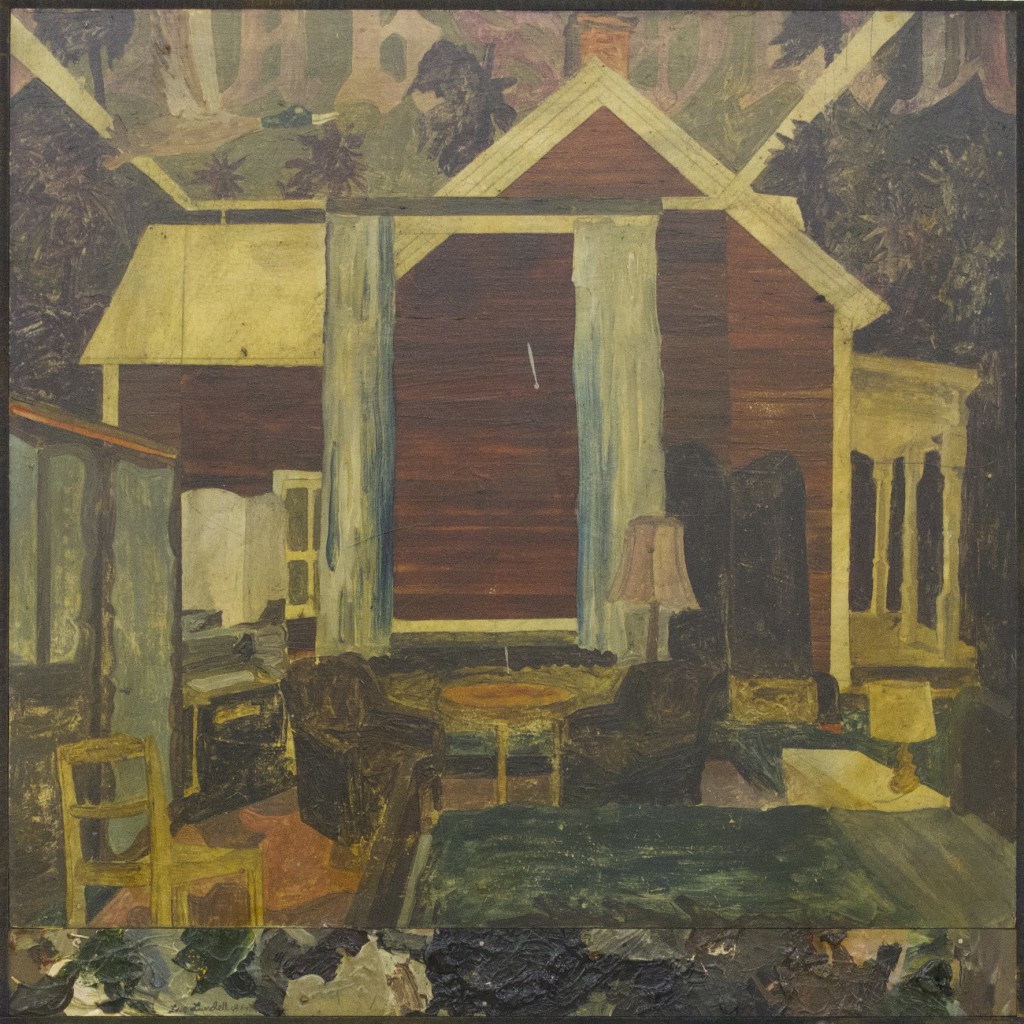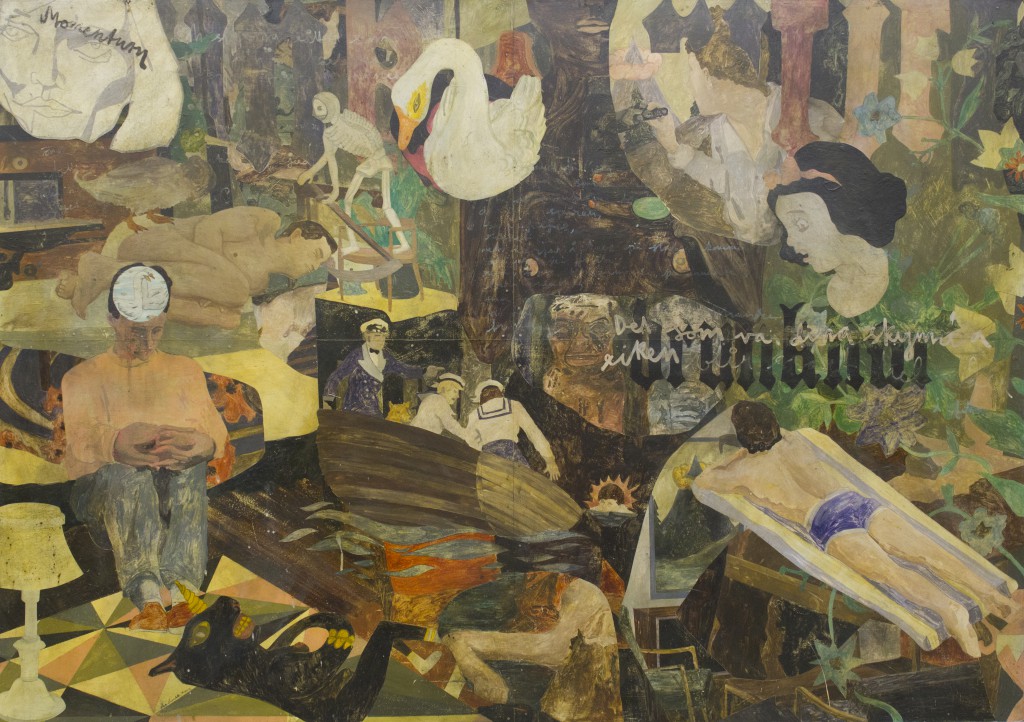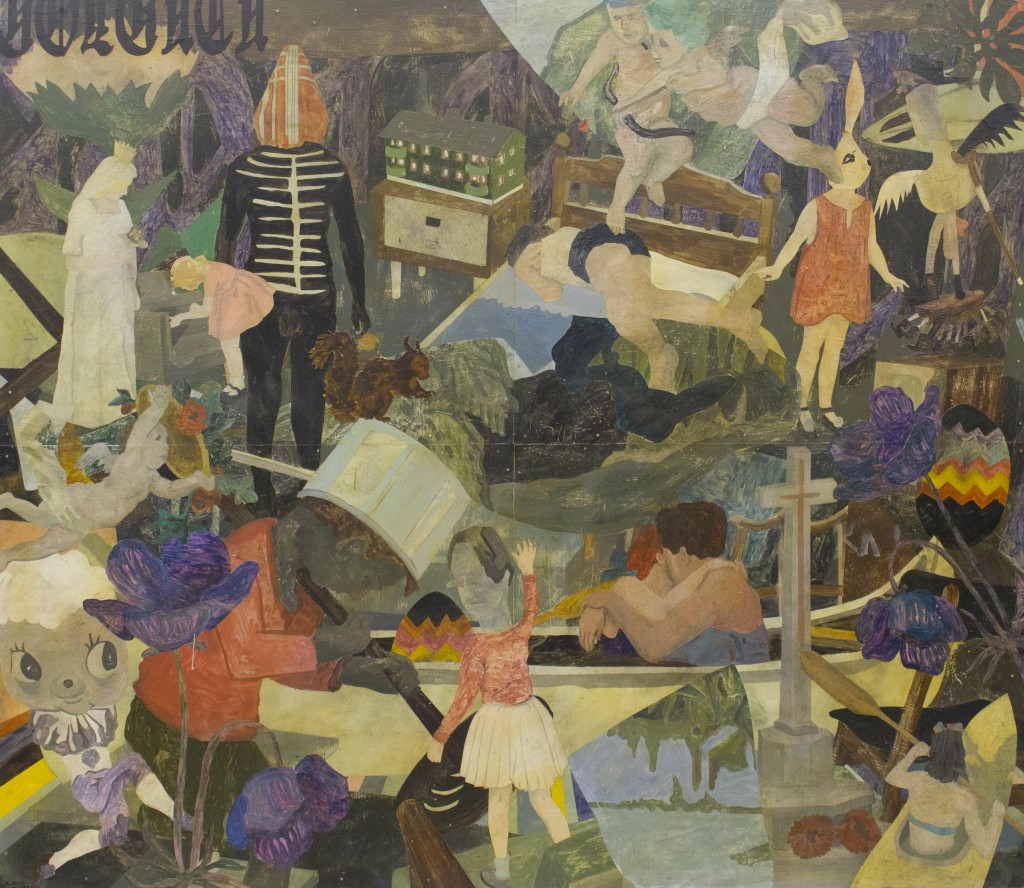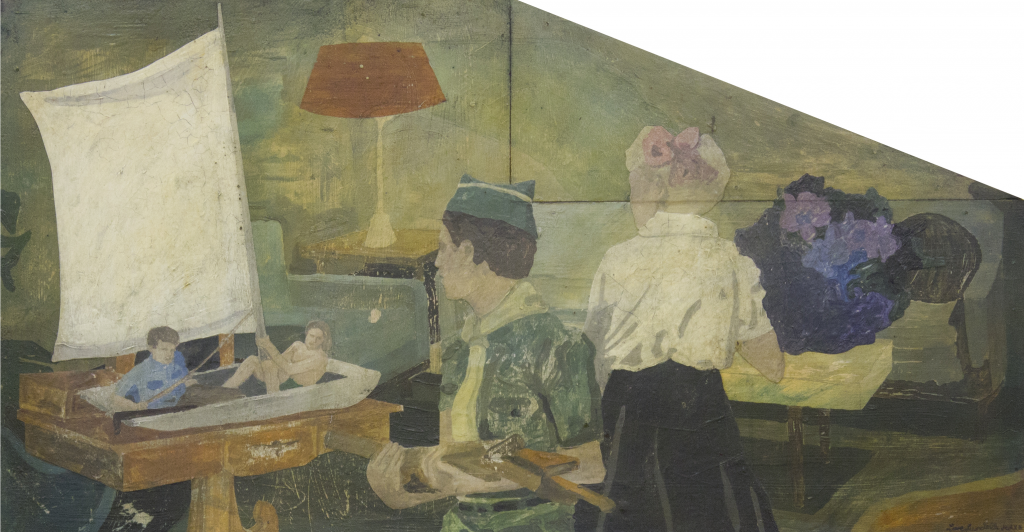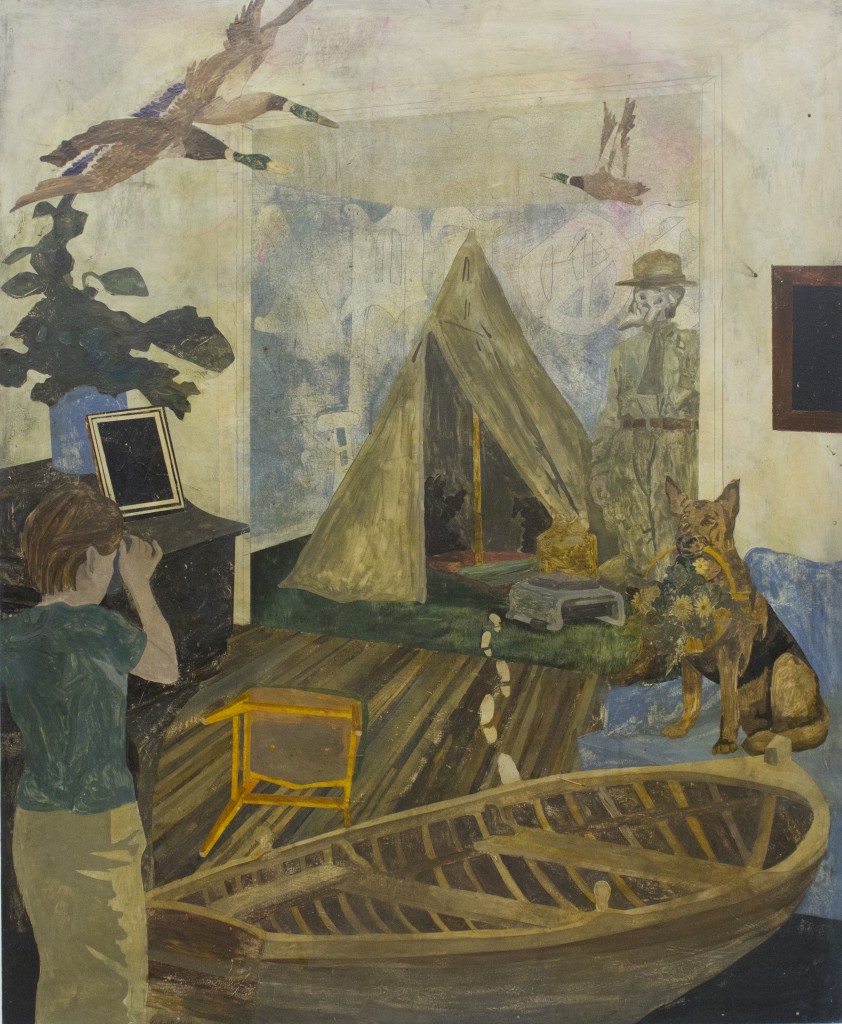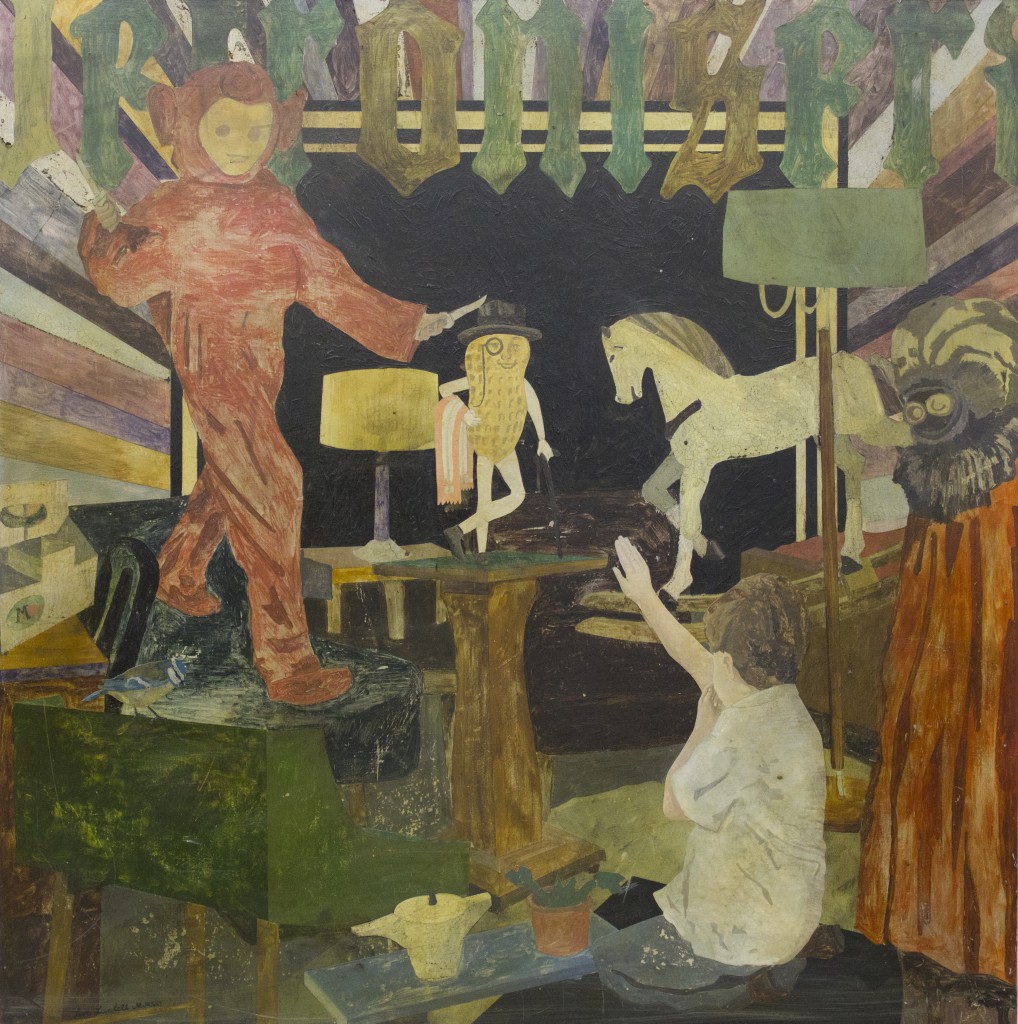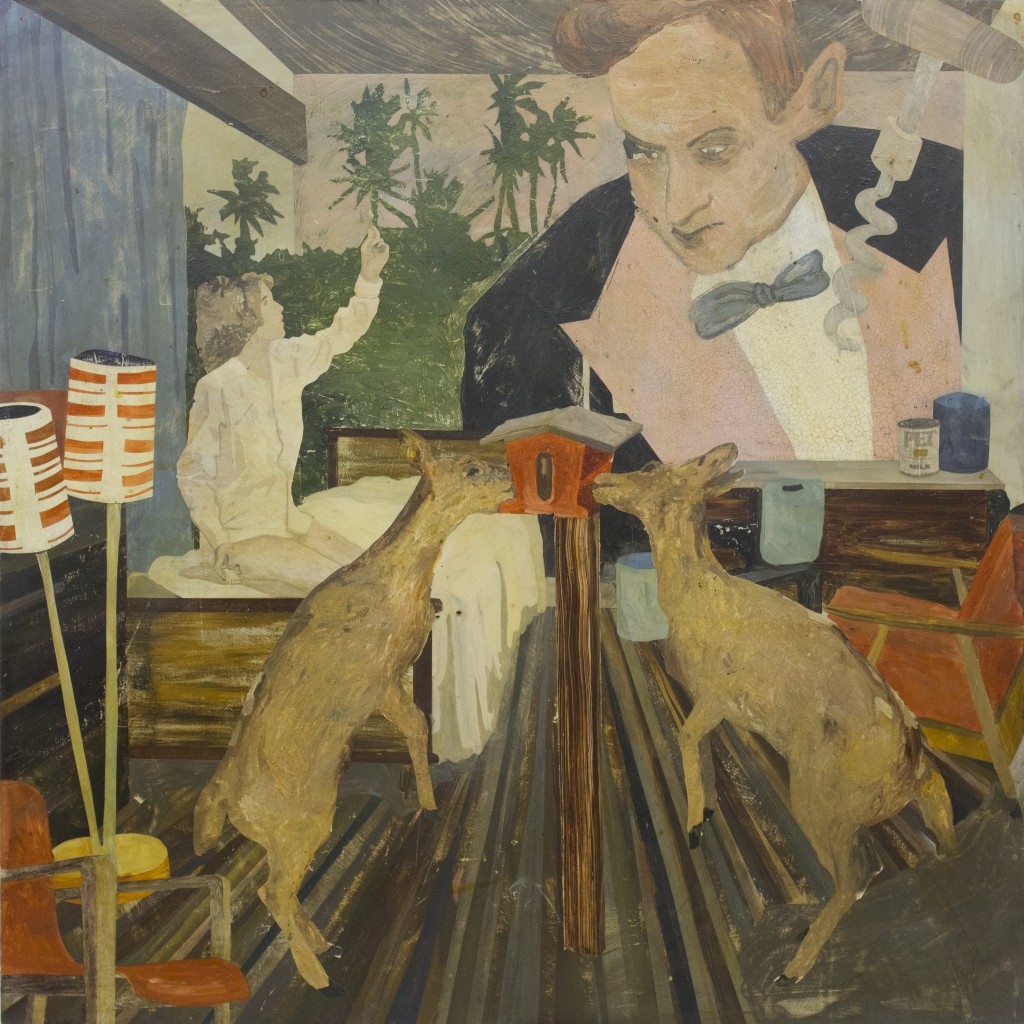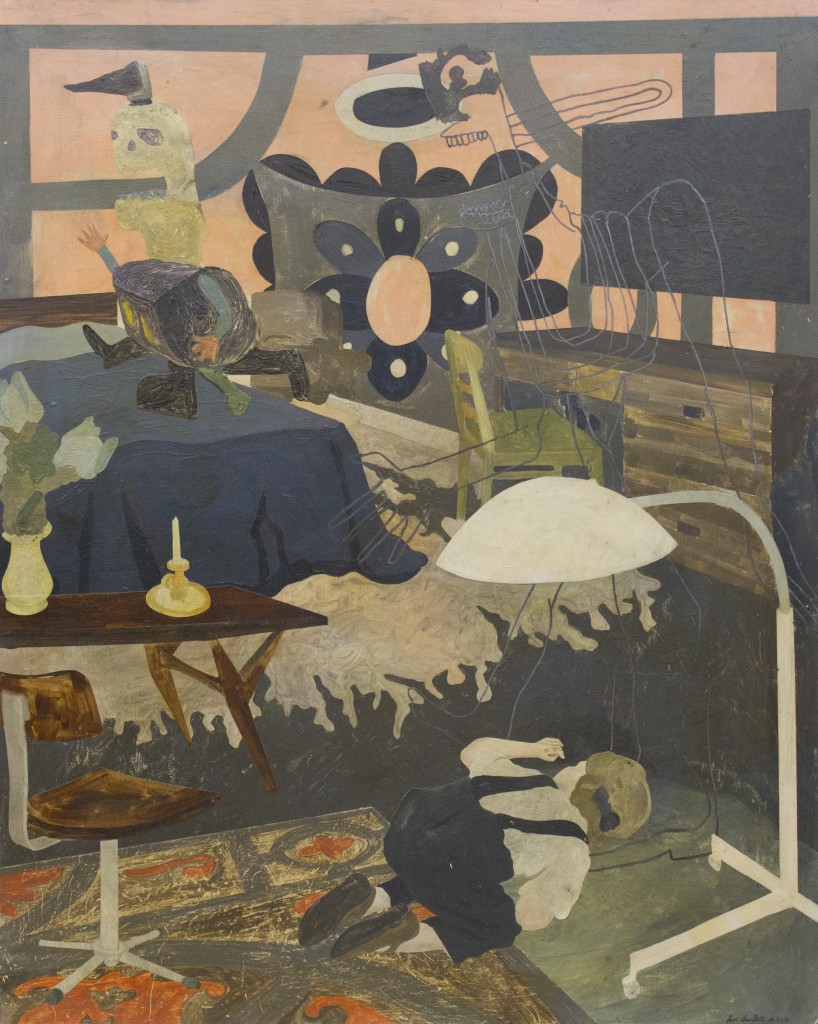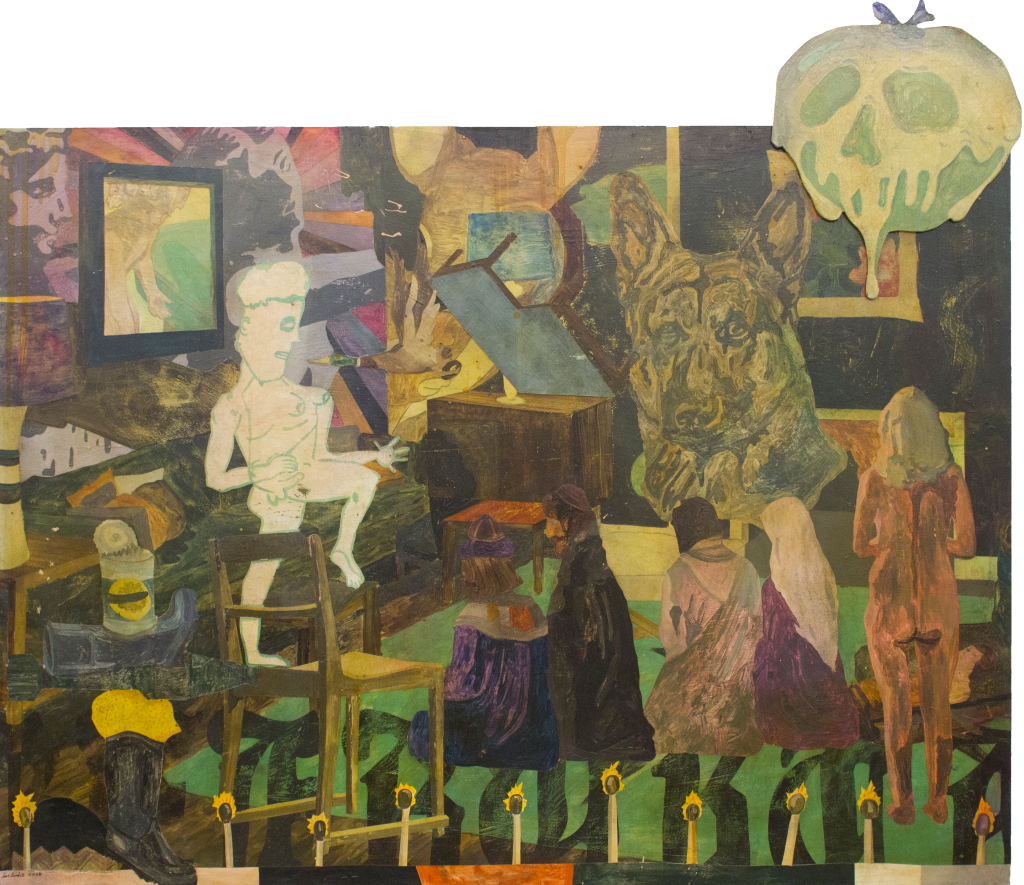Brända arv/Burnt heritage
I Brända arv utgår Lundell från minnen av de drömmar han hade som barn. Drömmar som
blir till resor där man inte kan blunda för alla intryck som smälter samman, där inget längre är
linjärt och man tvingas bearbeta sina känslor. Att visualisera dessa drömmar är ett sätt att
frigöra sig från dem och på så sätt skapa utrymme för nya drömmar, nya minnen. För att
kunna skapa detta utrymme tvingas man självupptaget gräva i det förflutna, i barndomen
och selektivt välja ut de minnen man inte längre behöver eller vill bära med sig i framtiden.
Varje verk är som en egen långfilm eller en dröm och kräver ett aktivt deltagande av
betraktaren. Konstnären ger oss rollfigurerna och vissa scener, men själva historien måste vi
själva hitta på. De scener vi ställs inför kan upplevas provocerande men också inbjudande i
sin naivitet. Vi befinner oss i fablernas värld. Mittemellan det absurda och rationella uppstår
komik, en svart humor som präglar samtliga verk. Medvetet eller omedvetet tvingas vi som
betraktare att gräva i vårt eget förflutna, vi tillåts drömma oss bort en stund och på så sett
ges också vi tillfälle att göra upp med vårt eget förflutna.
The title of the exhibition, Brända arv (Burnt heritage) – deals with the child’s need for adaptation when growing up. A desire to try to become a part of its growing environment creates a kind of conscious mendacity, where travels into the world of imagination are offered as the only true option.
Lundell bases his work in Brända arv on memories of the dreams he had as a child. In our dreams, we can’t possibly ignore all impressions merging, a concentrate of images and emotions, a chaos where nothing is linear. We can’t defend ourselves. To visualize the dreams is a way to free oneself from them, and thus make room for new images and memories.
In order to make room we are often forced to dig into the past and selectively pick out the memories we no longer need or want to carry with us into the future.
Each work requires an active participation by the viewer. But to understand the work it must be experienced in a larger context; to understand a dream is to see it in the context of other dreams for a period of time. We can’t isolate it and individually analyze its meaning.
The artist gives us the characters and some scenes, but we have to come up with the story ourselves. The scenes we face may seem provocative, but also inviting in its naivety.
We are in the world of fables. In between the absurd and rational something comical emerge, a black humour that characterizes all the works. Consciously or unconsciously, the viewer is forced to delve into his or her own past.
Lundell’s work is a mix of painting, collage and drawing. The difference from previous work is that the painting is now given a more prominent role, while the collage only appear in isolated parts. As the memory image becomes more and more detailed, he allows layers to emerge and therefore, the final work often becomes quite different from the original idea.
Text: Anna Thulin
Under Evas vingar/Under the wings of Eva (2013)
Acrylic, collage and shellack on MDF. 100 cm x 100 cm
Standoff med natur/Standoff with nature (2013)
Acrylic, collage and shellack on MDF. 80 cm x 60 cm.
Skjut hjärtats törst/Shooting the thirst of the heart (2013)
Acrylic, collage and shellack on MDF. 90 cm x 115 cm
Revolt i skydd av dina potemkinkulisser/Revolution safe behind your potemkin village (2013)
Acrylic, collage and shellack on MDF. 160 cm x 120 cm
När det du sjösatt sjunker/When what you launch sinks (2013)
Acrylic, collage and shellack on MDF. 80 cm x 60 cm
Klarsömn/Lucid dream (2013)
Acrylic, collage and shellack on MDF. 50 cm x 45 cm
Jag drunknar i det som var dina skymda riken/Drowning in what was your hidden kingdoms (2013)
Acrylic, collage and shellack on MDF. 160 cm x 113 cm
Golgatas kärlekstunnel/Golgatas’ tunnel of love (2013)
Acrylic, collage and shellack on MDF. 150 cm x 120 cm
Glimt av vad som kunde varit/Glimpse of what could have been (2013)
Acrylic, collage and shellack on MDF. 40 cm x 60 cm
Explorer (2013)
Acrylic, collage and shellack on MDF. 110 cm x 90 cm
Detronisera mer/Dethrone more (2013)
Acrylic, collage and shellack on MDF. 100 cm x 100 cm
Det ljus som släcker/The darkening light (2013)
Acrylic, collage and shellack on MDF. 110 cm x 110 cm
Allt är egentligen en konversation med dig själv/Everything is just a conversation with yourself (2013)
Acrylic, collage and shellack on MDF. 100 cm x 85 cm
Sju år i ett norskt vattenfall/Seven years in a norwegian waterfall (2013)
Acrylic, collage and shellack on MDF. 120 cm x 95 cm
Year
2013
Category
Exhibited work, Paintings



